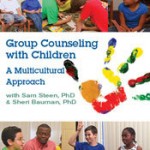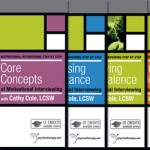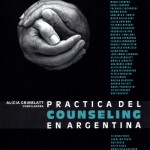Mar 27, 2013 | Video Reviews
 In these videos, Sam Steen, Ph.D., and Sheri Bauman, Ph.D., utilizes therapeutic interventions in their group counseling collaboration to create effective ways of educating children about diversity. Steen and Bauman introduce the video by sharing the necessary steps in group formulation and preparation: planning, screening, modeling, self-disclosure (not too personal), processing (reflect, think and ponder) and evaluating (age appropriate and specific to the group). Throughout these videos, counselors are instructed in how to replicate groups.
In these videos, Sam Steen, Ph.D., and Sheri Bauman, Ph.D., utilizes therapeutic interventions in their group counseling collaboration to create effective ways of educating children about diversity. Steen and Bauman introduce the video by sharing the necessary steps in group formulation and preparation: planning, screening, modeling, self-disclosure (not too personal), processing (reflect, think and ponder) and evaluating (age appropriate and specific to the group). Throughout these videos, counselors are instructed in how to replicate groups.
Steen and Bauman co-facilitate this group to help these children understand cultural diversity, or multiculturalism. They create a safe environment in which children can interact, and they teach diversity using fun educational tools such as ice cream and songs. Therefore, demonstrating diversity is constantly prevalent in our surroundings.
A unique perspective on the demonstration of activities is displayed in this video, which also illustrates how a therapeutic bond is formed. This positive bond between youth and counselor can be based on relational features, such as the degree to which the therapist is being stimulating, humorous or rewarding, especially with young children. The video is exceptional in how the children are addressed and encouraged to engage.
The lack of cognitive development can limit a younger client’s ability to evaluate connections between therapy tasks and goals, and the involvement of parents and other caregivers in youth therapy can complicate the issue of goal consensus. Steen and Bauman effectively illustrate how to go beyond such roadblocks to create a therapeutic alliance and establish treatment outcomes for these multicultural issues.
Throughout the video, Steen and Bauman illustrate both humorous and serious themes that can be addressed in diversity. There are a total of six (6) sessions, all of which contain information that a therapist can take away and utilize when leading groups, or even with younger individual clients. Different activities are carried out throughout the sessions, such as “diversity beans,” “name color,” “comfort zones,” and “about your culture,” to name a few. Some of these can be used in the classroom to make children more aware of diversity, whether it will be processed further than the surface level observations or not. Although every activity has an element of fun, each activity is effective and always follows through with purpose and reflections. Despite the fact that counselors and clients were videotaped, they were able to give an accurate depiction of group dynamics and cohesion, as well as therapeutic practices and outcomes.
While therapeutic styles are personal and are as important as techniques and theories, counselors can utilize these techniques to blend with their own styles and the needs of their clients to produce valuable outcomes. This video shows that Steen and Bauman are successful in demonstrating a practical and technical approach using innovative techniques and activities.
I would highly recommend this video to anyone who works with younger clients even if it is only to add techniques to your battery of information to help these young people view the world in a new way by appreciating differences.
Psychotherapy.net (Producer), & Gallego, T. (Director). (2011). Group counseling with children: A multicultural approach [DVD]. Available in DVD and video streaming from http://www.psychotherapy.net/video/diversity-group-children
Reviewed by: Josephine L. Rodriguez, NCC, doctoral counseling student, Barry University, Miami Shores, Florida.
The Professional Counselor Journal
HOME PAGE
Mar 21, 2013 | Video Reviews
 Psychotherapy.net and Cathy Cole have developed an impactful DVD series on Motivational Interviewing (MI). This 2012 series illustrates how motivational interviewing is a counseling approach to improve how counselors and clients have conversations. These DVDs are up-to-date and current with a natural flow to the interview conversations. The DVDs serve as a resource to introduce counselors-in-training to MI. Furthermore, the series is a refresher for counselors who have been trained in the past and need a thought- provoking experience to reaffirm the positive impact that this Rogerian-focused technique can provide. The process reinforces client autonomy as the counselor and client join together to create a matrix for change. Rather than the counselor being an ‘expert,’ Cole states that it is important to ask permission of the client to share information. The four part series covers the core principles of increasing importance, building confidence, and resolving ambivalence.
Psychotherapy.net and Cathy Cole have developed an impactful DVD series on Motivational Interviewing (MI). This 2012 series illustrates how motivational interviewing is a counseling approach to improve how counselors and clients have conversations. These DVDs are up-to-date and current with a natural flow to the interview conversations. The DVDs serve as a resource to introduce counselors-in-training to MI. Furthermore, the series is a refresher for counselors who have been trained in the past and need a thought- provoking experience to reaffirm the positive impact that this Rogerian-focused technique can provide. The process reinforces client autonomy as the counselor and client join together to create a matrix for change. Rather than the counselor being an ‘expert,’ Cole states that it is important to ask permission of the client to share information. The four part series covers the core principles of increasing importance, building confidence, and resolving ambivalence.
The first DVD, Motivational Interviewing Step by Step: Core Concepts, provides the viewer with the building blocks for conducting a MI along with the rational for each step. Victor Yalom and Cathy Cole have a smooth style of walking the viewer through the process and their conversations are highlighted by simple graphics to reinforce the basic points. The DVDs also are good to just listen to on a long drive to enhance the learning experience. For example, Cole talks about the mnemonic of those “DARN CATS” and how following these steps can result in a beneficial conversation.
Motivational Interviewing Step by Step: Building Confidence is the second DVD and helps to instill confidence in both the client and the counselor. The four principles of MI: (1) expressing empathy, (2) developing discrepancy, (3) rolling with resistance/reflecting discord, and (4) supporting self-efficacy are explained and illustrated throughout the series with clear and logical examples.
The third DVD is Motivational Interviewing Step by Step: Increasing Importance. The disc has three excellent counseling sessions by Cole who brings to life the importance of various points. For example, too often a counselor when confused about an issue will revert to asking question after question. Cole demonstrates that continued reflection is important so that the client does not feel ‘grilled.’
The fourth DVD, Motivational Interviewing Step by Step: Resolving Ambivalence, encourages the counselor to assist the client in using what is known by the client and then encouraging that more information be sought. MI helps the client explore ambivalence and look at different resources and information, which may help the client explore their thoughts. The series also is strong as it provides examples for various work environments for counselors such as EAP or agency. The clients are in various stages of counseling from initial intake to established clients so the viewers get a broad understanding of MI.
Overall, the series is well produced, informative and helps the viewer form a clear understanding of the motivational interviewing (MI) approach. Within the DVDs there are helpful meta-processing comments regarding the counseling sessions. The accompanying manuals also have wonderfully constructed discussion questions, informational summaries and transcripts of the sessions.
Motivational interviewing step by step (4 DVD series) [DVD]. Psychotherapy.net (Director) (2012). Available in DVD and Video Streaming at http://www.psychotherapy.net/MI
Reviewed by: Matthew Mims, NCC, University of Nebraska at Kearney, Kearney, Nebraska.
The Professional Counselor Journal
HOME PAGE
Mar 20, 2013 | Book Reviews, Non-English Texts
 Alicia Grinblatt (2008) ha compilado las experiencias de 48 counselors Argentinos. Siendo ella misma una Counselor, ha logrado capturar el trabajo anónimo que los consejeros realizan día a día (p.11). El libro está dividido en 13 áreas incluyendo adicciones, sexualidad, supervisión, y counseling educacional, entre otros. Andrés Sánchez Bodas (p. 15) remarca que cada texto en el libro emerge de la práctica profesional. Cada capítulo provee la representación del estado del Counseling en el país acorde con las experiencias de su autor; su pasión por la profesión, y sus expectativas para el futuro.
Alicia Grinblatt (2008) ha compilado las experiencias de 48 counselors Argentinos. Siendo ella misma una Counselor, ha logrado capturar el trabajo anónimo que los consejeros realizan día a día (p.11). El libro está dividido en 13 áreas incluyendo adicciones, sexualidad, supervisión, y counseling educacional, entre otros. Andrés Sánchez Bodas (p. 15) remarca que cada texto en el libro emerge de la práctica profesional. Cada capítulo provee la representación del estado del Counseling en el país acorde con las experiencias de su autor; su pasión por la profesión, y sus expectativas para el futuro.
El libro cubre una variedad de áreas, poblaciones y escenarios. Todas las secciones incluyen discusiones sobre el tema, estrategias usadas para abordarlo, y las experiencias de los counselors en el campo. Algunos capítulos enfatizan la descripción de experiencias de campo; Claudia Fernández (p. 57) escribió acerca de los sentimientos y experiencias de personas con esclerosis múltiple; sus dificultades en la búsqueda de ayuda y su necesidad de sentirse apoyados. Fernández proyecta una vida de servicio y la inspiración por hacer la diferencia en la vida de otros. Silvia Perazzo (p. 100) también describe sus experiencia personales; expresa de manera genuina sus dudas, retos, y su recorrido profesional en el trabajo con niños. Su historia es un ejemplo de determinación y crecimiento personal; un camino de auto-descubrimiento profesional, una búsqueda continua de respuestas y recursos, y una vida construyendo relaciones de apoyo. Otros autores comparten estrategias específicas que están siendo usadas en Argentina. María Felisa Díaz (p. 31) describe un proyecto de inclusión social para adolescentes; Mabel Carrera, Rosel Carrere y Federico Elizalde (p. 23) describen un proceso de consejería de grupo ofrecida a personas que han sido liberadas de prisión; Silvia Mount (p.71) presenta una propuesta educativa usada en una institución de educación pre-escolar; y Verónica Peluffo de Apellaniz (p. 122) explica su trabajo con talleres de prevención de adicciones basados en niveles de comunicación y grupos de apoyo. Estos y muchos otros capítulos del libro constituyen un buen recordatorio de la relevancia del Counseling, la necesidad de la profesión y su impacto en la vida de las personas.
Algunos capítulos se refieren a temas más específicos. María Teresa Toscano (p. 112) explica el significado del término familias ensambladas; familias que han surgido de segundos matrimonios o uniones, donde todos los miembros de la familia tienen que conocerse unos a otros y construir un futuro juntos. Graciela B. Francisco (p. 134) discute el tema de adicciones en adolescentes y las necesidades de sus padres; la importancia de la dinámica familiar y estrategias para consejeros que trabajan con esas familias. Raquel Finkelstain (p. 163) introduce el tema de negocios familiares desde una perspectiva del counseling organizacional, y las dificultades que surgen de la dinámica entre las relaciones personales y los roles profesionales establecidos. Todos temas pertine
El libro Practica del Counseling en Argentina incluye una variedad tan amplia de tópicos que se hace imposible incluirlos todos en esta breve revisión. Sin embrago, se espera que los fragmentos seleccionados sirvan como una guía de temas a explorar; como reflexión acerca de los posibles usos del libro; y como un motivador para considerar este recurso bibliográfico. Es además importante mencionar que a pesar de que el libro ha sido escrito con base en el enfoque Centrado en la Persona, incluye además una sección completa que explora otros enfoques tales como Gestalt y Psicodrama; además de un numero de estrategias creativas que incluyen el trabajo con sonidos, expresiones orales, y conciencia corporal entre otros. ntes e innovadores en el campo del Counseling.
El libro Practica del Counseling en Argentina es una inspiración para todo counselor. Profesionales novatos pueden informarse acerca de los sentimientos, expectativas, y retos que todo Counselor tiene al inicio de su carrera profesional; Mientras que Counselors con más experiencia en el campo pueden utilizar este libro como una herramienta para relacionarse con otros e informarse acerca de las nuevas tendencias del Counseling en Argentina. Por otra parte, counselors expertos también pueden hacer uso de esta compilación de conocimientos y experiencias profesionales en el campo, para futuros proyectos de investigación y práctica. La esencia de este trabajo es capturada por Silvia Munt (p.70) con su frase: “Hay tanto por hacer… y yo solo tengo dos manos… que se pueden entrelazar con otras y otras y así formar redes que contengan…”
Grinblatt, A. (Ed.). (2008). Práctica del counseling en Argentina. Buenos Aires, Argentina: Georges Zanun Editores.
Revisado por:, Consejera Certificada en los Estados Unidos (NCC), estudiante de doctorado, Universidad Estatal de Carolina del Norte, Raleigh, Carolina del Norte.
The Professional Counselor
HOME PAGE
 In these videos, Sam Steen, Ph.D., and Sheri Bauman, Ph.D., utilizes therapeutic interventions in their group counseling collaboration to create effective ways of educating children about diversity. Steen and Bauman introduce the video by sharing the necessary steps in group formulation and preparation: planning, screening, modeling, self-disclosure (not too personal), processing (reflect, think and ponder) and evaluating (age appropriate and specific to the group). Throughout these videos, counselors are instructed in how to replicate groups.
In these videos, Sam Steen, Ph.D., and Sheri Bauman, Ph.D., utilizes therapeutic interventions in their group counseling collaboration to create effective ways of educating children about diversity. Steen and Bauman introduce the video by sharing the necessary steps in group formulation and preparation: planning, screening, modeling, self-disclosure (not too personal), processing (reflect, think and ponder) and evaluating (age appropriate and specific to the group). Throughout these videos, counselors are instructed in how to replicate groups. Psychotherapy.net
Psychotherapy.net 
